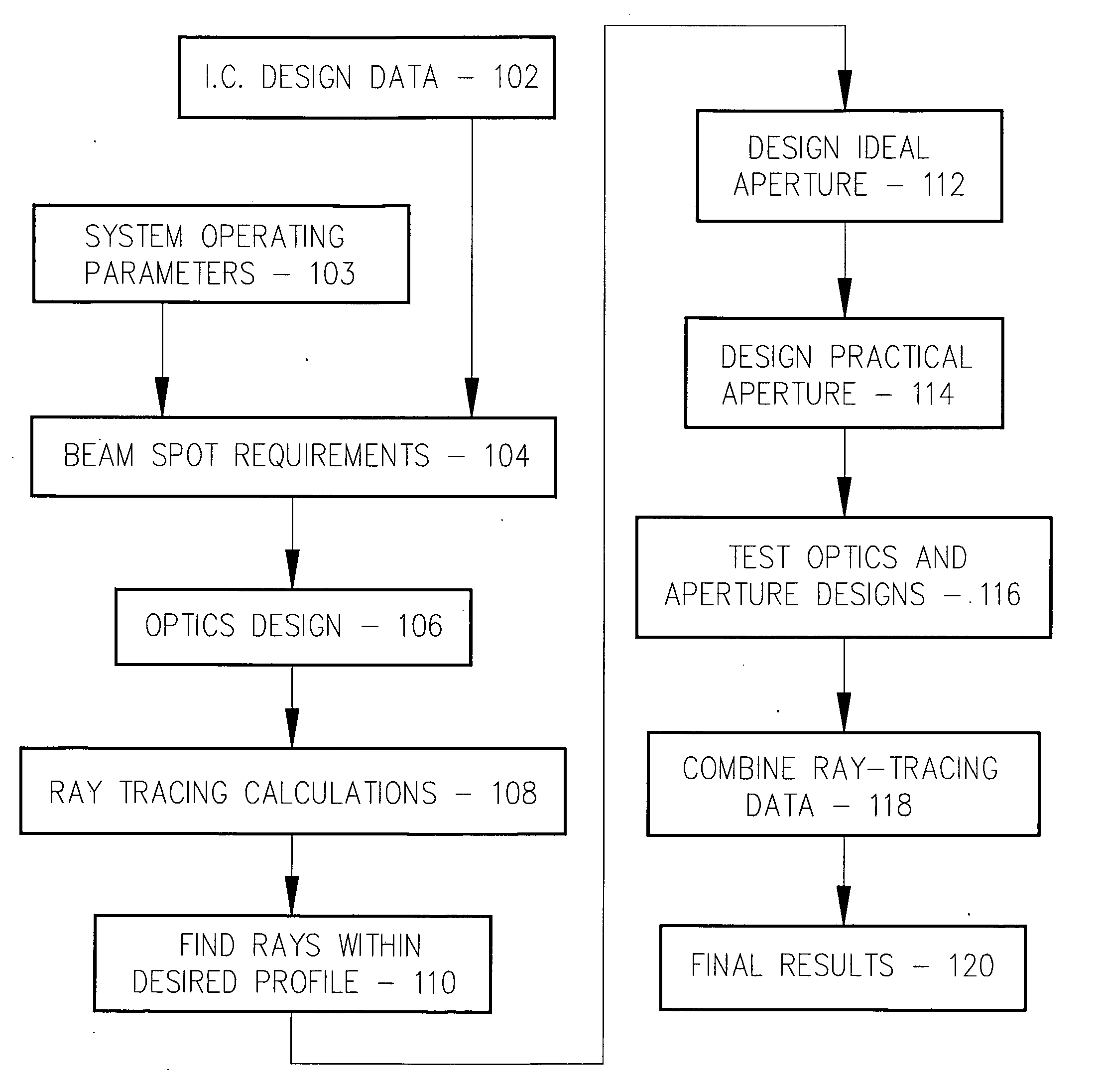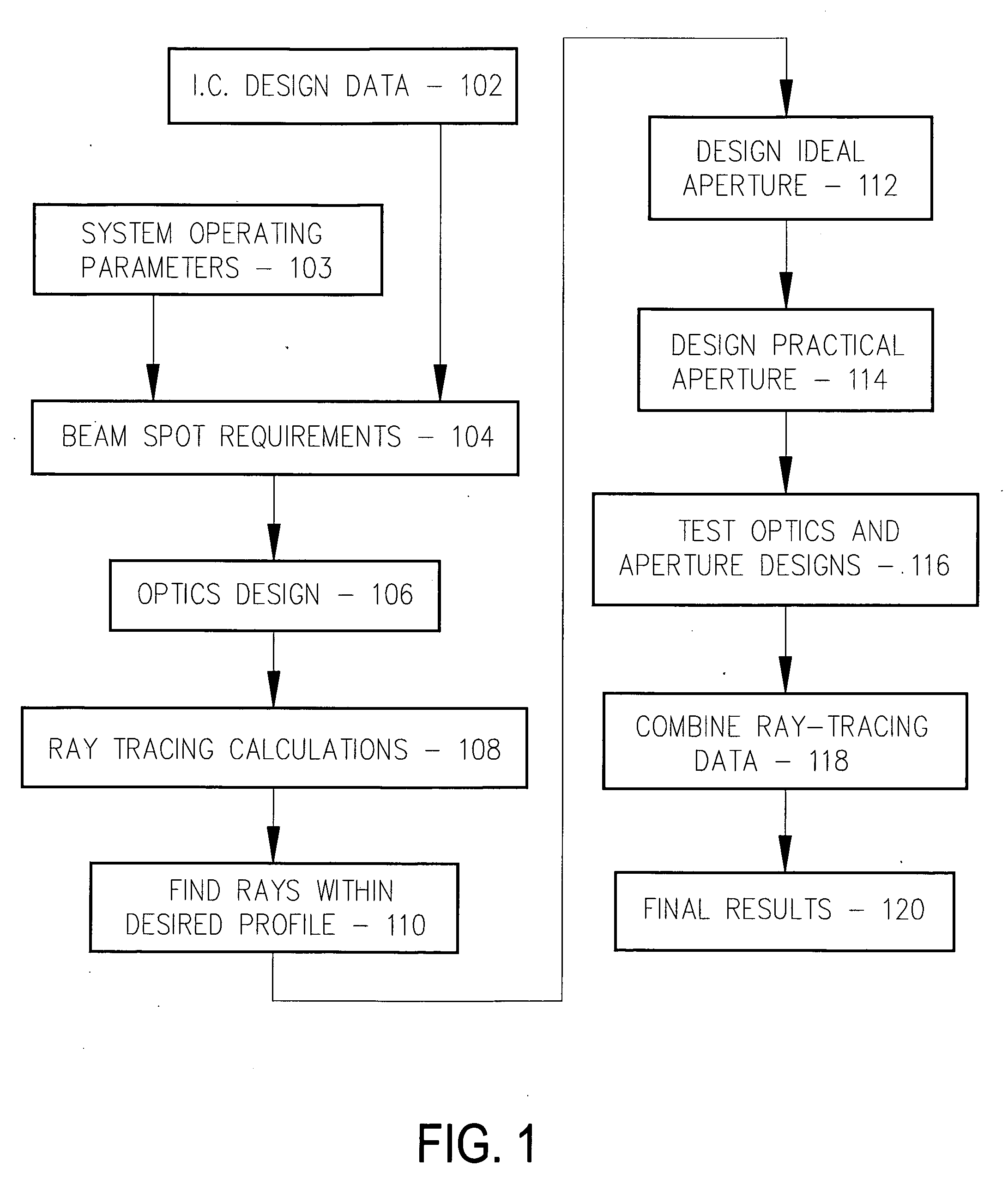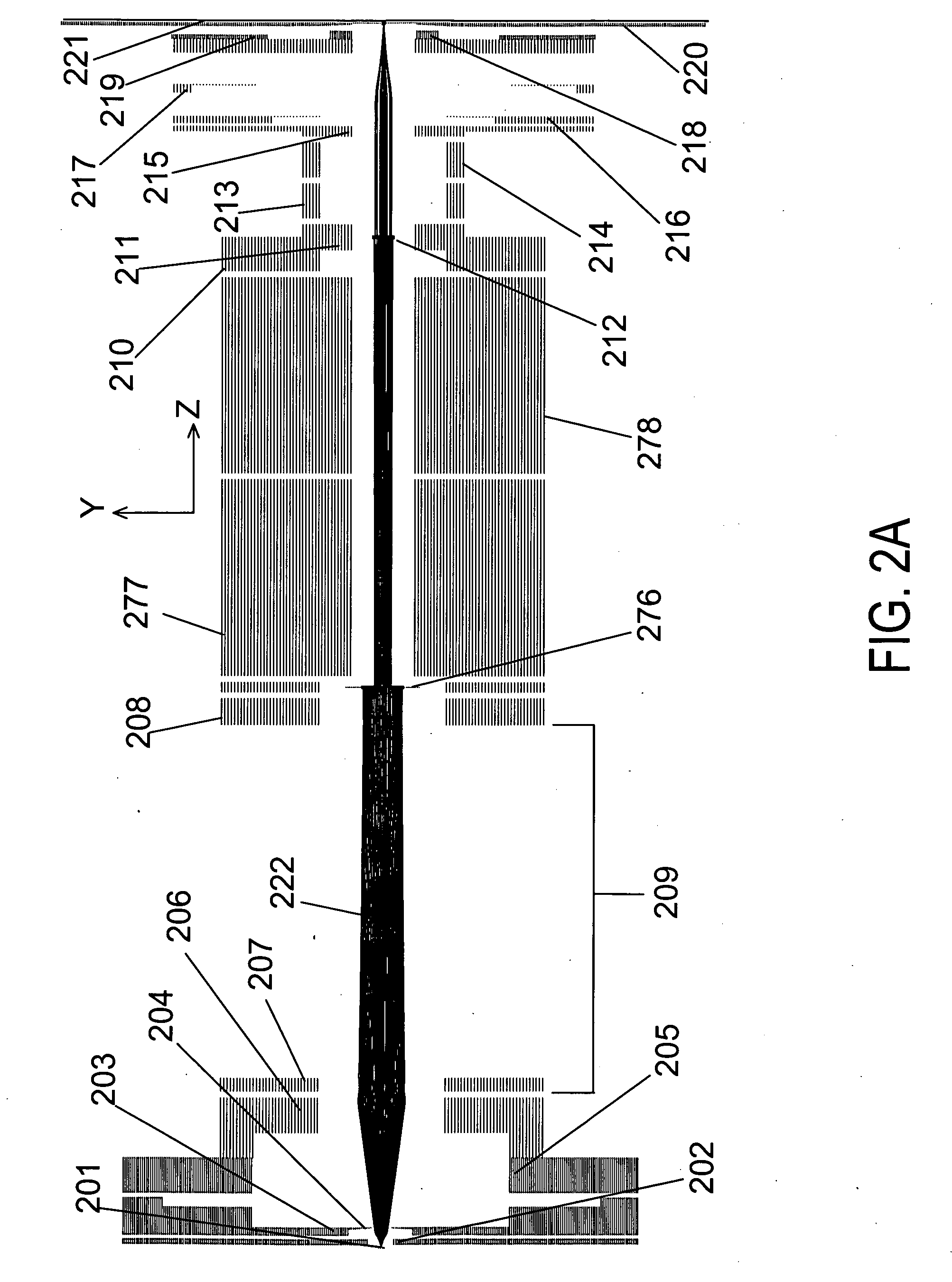Optics for generation of high current density patterned charged particle beams
a charge particle and high current density technology, applied in the field of optics for generating high current density patterned electron beams, can solve the problems of long current tails, large amount of beam writing dose, and inability to meet the needs of treatment, so as to maximize process latitude and minimize the effect of beam writing dos
- Summary
- Abstract
- Description
- Claims
- Application Information
AI Technical Summary
Benefits of technology
Problems solved by technology
Method used
Image
Examples
Embodiment Construction
[0093] This invention will be discussed in detail using its implementation in the field of electron beam lithography as an illustrative example. However, many other fields of use are envisaged, as outlined immediately below.
[0094] Scanning electron microscopy typically utilizes a roughly Gaussian beam in order to maximize the beam current density, thereby minimizing imaging time and / or maximizing the image signal-to-noise ratio. The disadvantage of using a Gaussian beam for microscopy is the long current tails extending away from the center of the beam which tend to reduce the achievable image contrast. The present invention has potential uses in scanning electron microscopy to reduce the extent of these current tails, thus improving image contrast. These same considerations would apply to many types of scanned electron beam imaging and analysis tools, such as Scanning Auger Microscopes, Scanning Electron Microscopes, Scanning Transmission Electron Microscopes, etc.
[0095] The pres...
PUM
 Login to View More
Login to View More Abstract
Description
Claims
Application Information
 Login to View More
Login to View More - R&D
- Intellectual Property
- Life Sciences
- Materials
- Tech Scout
- Unparalleled Data Quality
- Higher Quality Content
- 60% Fewer Hallucinations
Browse by: Latest US Patents, China's latest patents, Technical Efficacy Thesaurus, Application Domain, Technology Topic, Popular Technical Reports.
© 2025 PatSnap. All rights reserved.Legal|Privacy policy|Modern Slavery Act Transparency Statement|Sitemap|About US| Contact US: help@patsnap.com



